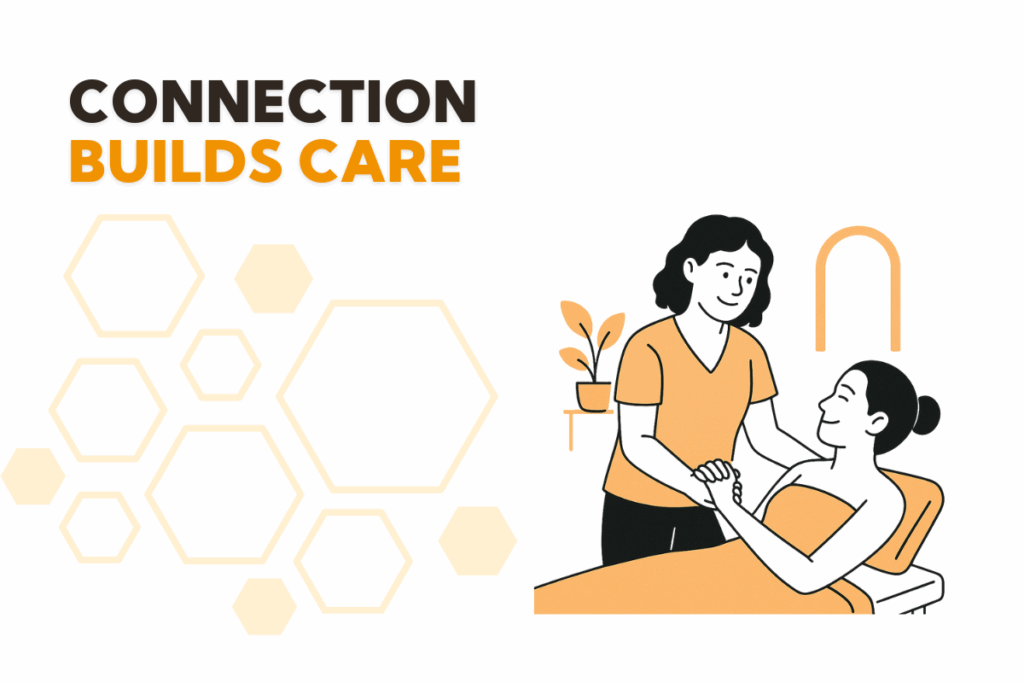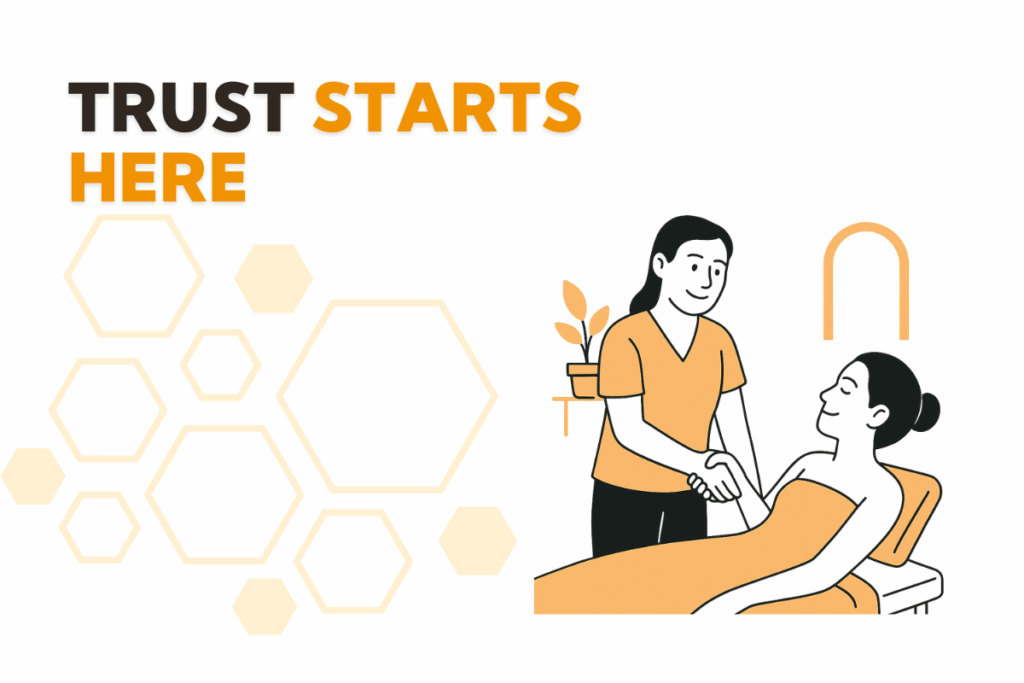When your intake feels scripted, the connection suffers
Warm client check-ins are one of the most powerful ways to build trust and loyalty in your massage clinic. Yet over time, what once felt genuine can slowly turn into a routine script. The greeting is the same. The questions are the same. The answers are short and polite. Those first few minutes should set the tone for care and connection, but when the warmth is missing, clients can feel like they are just moving through a process. In massage therapy, the quality of the check-in directly impacts how much clients share, how invested they are in the plan, and how effective the treatment becomes.
Why scripted check-ins drain trust and results
When warm client check-ins lose their authenticity, it can reduce disclosure and weaken the therapeutic relationship. Clients may stop mentioning new discomforts, recent stress, or changes in their routine. Research in patient-centered care shows that strong rapport improves treatment adherence and satisfaction. In a busy clinic, it is easy to see how efficiency can overshadow empathy, but the loss of warmth comes at a real cost.
The real causes behind robotic intake
Time pressure and cognitive load
A packed schedule and constant multitasking make it tempting to follow a memorized script. Over time, warm client check-ins give way to quick, mechanical exchanges that miss important details.
Burnout and compassion fatigue
When therapists or front desk staff feel emotionally drained, their tone, body language, and engagement can shift. Without small resets, even the most dedicated professionals can struggle to deliver genuine connection.
Environment and cues
The space around the check-in matters. A noisy, cluttered, or overly public reception area can make clients less willing to open up, even when the therapist is asking the right questions.

What “warm” actually means in a clinical setting
Warm client check-ins are not about small talk. They are about creating a safe and respectful space where clients feel comfortable sharing openly. This includes:
- A personal greeting using the client’s name
- Open-ended questions that invite more than a yes or no
- Active listening that shows genuine interest
- A collaborative approach to planning the session
When these elements are present, the intake sets a strong foundation for care.
A 5-step framework to bring warmth back without adding minutes
Step 1: Reset the first 20 seconds
Before the greeting, pause and focus entirely on the client. Use their name, smile, and make eye contact to signal that they are your priority.
Step 2: Swap scripts for “two openers”
Start with two open-ended prompts such as, “What feels most important today?” or “What has changed since we last saw you?” These keep warm client check-ins personal and relevant.
Step 3: Use OARS in 60 seconds
Incorporate the OARS method: Open-ended questions, Affirmations, Reflections, and Summaries. Even a quick reflection like, “It sounds like your shoulder is tighter than usual” reinforces active listening.
Step 4: Co-create a small goal for the session
Agree on one specific, achievable outcome for the day. This ensures you and the client share the same vision for success.
Step 5: Close the loop with clarity
Summarize the plan in plain language and confirm: “We will focus on your neck tension today and aim to improve range of motion. Does that sound right?”
Front desk playbook for warm check-ins at scale
Keep what works from your current script
Retain required safety or legal questions, but position them after the initial personal interaction.
Create a welcoming environment
Audit your reception area for privacy, comfort, and calm. Even small changes can help warm client check-ins feel more natural.
Use a time-smart flow
A genuine greeting, two open-ended questions, a reflection, and a summary can all fit within 90 seconds without feeling rushed.
Therapist presence on busy days
Micro-resets between clients
Take half a minute to release tension, take a slow breath, and recall the next client’s goal before greeting them.
Managing compassion fatigue
When energy is low, focus on essential intake elements plus one meaningful reflection. Lean on team support and rotate tasks when possible.
Language swaps that make check-ins warmer
From closed to open
Replace “Any pain today?” with “What discomfort is most noticeable right now, and what seems to help or worsen it?”
From directive to collaborative
Instead of “We will do deep tissue today,” say “Based on what you’ve shared, deep tissue could help. How does that sound to you?”

Measure the warmth, not just the speed
Track whether each warm client check-in includes the client’s stated goal, at least one reflection, and a co-created session plan. These are stronger indicators of quality than speed alone.
Bring it to life this week
Test the framework with a few clients each day and observe the difference in their responses. Over the week, refine your approach as a team. For support in documenting client goals and improving planning, tools like electronic charting SOAP notes and online intake form can help ensure your warm client check-ins lead directly into meaningful treatment sessions.
Strong check-ins lead to better care
Warm client check-ins do more than make clients feel welcome. They strengthen trust, uncover critical details, and lay the groundwork for better results. By keeping them personal, collaborative, and intentional, you turn the start of each appointment into a moment that matters.
FAQs
Use two open-ended questions and one reflection before moving on to logistics. This creates connection without slowing the schedule.
Gently expand on what they do share. If they say “fine,” ask, “What has been going well for you lately?”
Yes. Strong rapport and open communication have been linked to better adherence and improved physical results.
Share the 5-step framework, practice in team meetings, and encourage feedback on what feels natural for each person’s style.


